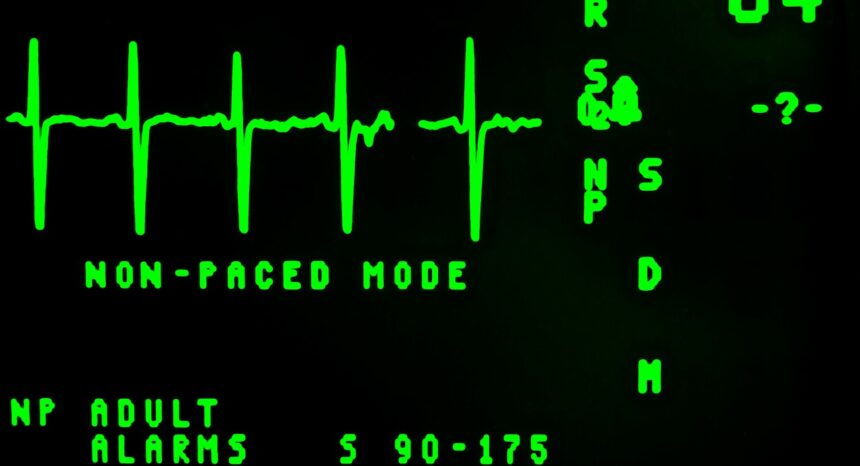Nearly 2 million low-income families in the U.S. affected by atherosclerotic cardiovascular disease (ASCVD) face high or catastrophic financial burdens each year due to out-of-pocket costs, a new study in JAMA Cardiology finds.
Atherosclerotic cardiovascular disease is another term for coronary artery disease, in which plaque builds up in the heart’s arteries, narrowing these passageways and making it harder for blood to flow. The condition can lead to heart attack or stroke. About 10 percent of the adult population in the U.S. has ASCVD, according to a 2017 report from the American Heart Association.
Recent research has shown how heart attack and stroke are “unanticipated major health care events that require emergent and expensive care.”
But chronic conditions, which are not unanticipated, often require expensive care also — and these costs are compounded over the long duration of such illnesses.
In this new JAMA Cardiology study, researchers at the University of Texas, the Center for Healthcare Advancement and Outcomes and Yale documented just how hard low-income families are hit by out-of-pocket expenses associated with managing ASCVD, even among those covered by insurance.
The researchers looked at responses collected through a nationally representative survey between January 2006 and December 2015 from 22,521 people with ASCVD. The survey asked about health care costs and income, among other items. The researchers categorized families as low-income if their annual income was less than 200 percent of the federal poverty line; families earning in excess of 200 percent of the federal poverty limit were considered mid/high-income. Then they compared out-of-pocket medical expenses to annual family income, less subsistence expenses (i.e., food) to assess the burdens these families faced in terms of medical costs.
The authors defined families where out-of-pocket expenses totaled more than 20 percent of family income as facing high financial burden and those with out-of-pocket expenses totaling more than 40 percent of family income as facing catastrophic financial burden.
They found:
- One in four low-income families with a member with ASCVD experienced high financial burden and one in ten experienced catastrophic financial burden due to out-of-pocket costs. This spending was often tied directly to the health care for the member with ASCVD: “Among low-income families that incurred a catastrophic financial burden from health care costs, most of their health care expenses were spent on members with ASCVD.”
- Despite expansions in access to insurance following passage of the Affordable Care Act, low-income families were still disproportionately burdened by out-of-pocket costs. In 2014 and 2015, low-income families had three-fold higher odds of experiencing high financial burden than mid/high-income families; they had nine-fold higher odds of experiencing catastrophic financial burden. “Even among the insured, 1.6 million low-income families (21.8 percent) experienced high financial burden and 721,000 low-income families (9.8 percent) experienced catastrophic out-of-pocket health care expenses in 2014 and 2015.”
- Low-income families with private insurance had the highest risk of experiencing high and catastrophic financial burdens as a result of out-of-pocket costs associated with ASCVD. “Under these insurance programs, patients are more likely to bear out-of-pocket costs for services that are usually subsidized by employers and manifest as high insurance premiums, as well as high deductible expenses and coinsurance payments for most health care services,” the authors write.
- The largest costs associated with care for ASCVD were insurance premiums and medications.
“Our study suggests that even among those with insurance coverage, there is a substantial financial impact of out-of-pocket health expenses for families with members needing chronic cardiovascular care, indicating underinsurance,” the authors conclude. They suggest that health care reforms that set caps on out-of-pocket expenses “do not reflect the financial capacity of low-income families facing costs of care for chronic disease.”
In a phone interview with Journalist’s Resource, Dr. Khurram Nasir, a cardiologist at Yale and an author of the study, said the findings show how patients “suffer side effects of the treatment we provide them in terms of financial toxicity.”
“Just pointing to the problem is not going to be enough,” he continued. The phenomenon of financial toxicity can have both health and non-health consequences, in terms of debt, quality of life and increased risk for additional health events, including heart attacks and stroke, he said.
Nasir suggested that potential interventions include capping out-of-pocket costs, screening for financial risk, disclosing prices so that patients can avoid unnecessary medical care or care that only provides marginal benefits, developing internal health system resources to alleviate costs and partnering with community health resources that do the same.
He concluded, “What I’m trying to do is get the cardiology community to say, ‘How can we help?’”
Looking for more research? Journalist’s Resource has covered studies on health care spending in the U.S., Medicaid reform and access to primary care and the links between childhood stress and the risk for adult chronic disease.


Expert Commentary